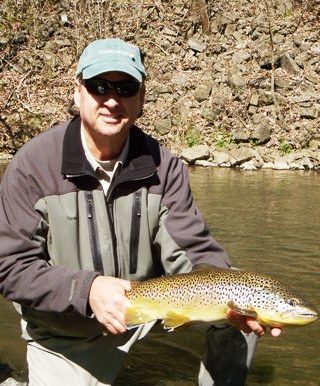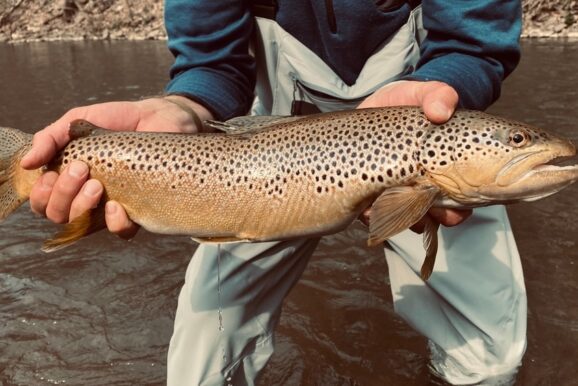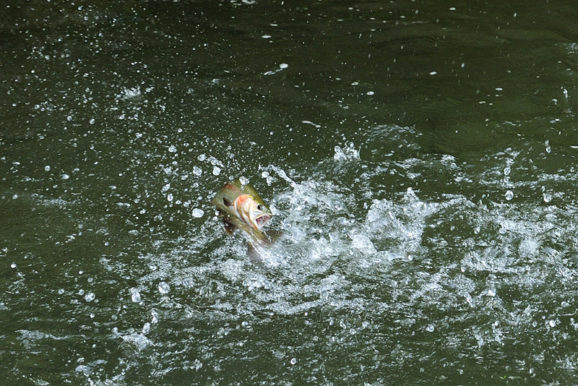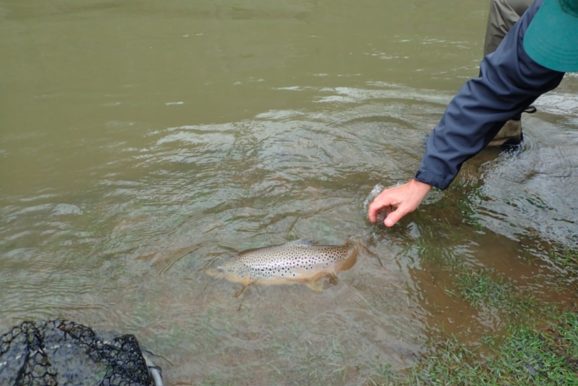
My motto for fishing during the early spring months is to primarily fish nymphs low and slow. During this time of year, it’s very important to have your flies exactly where the fish are, which is close to the bottom. While it is possible to see small black stoneflies or blue wing olives, it’s still early enough in the spring that a consistent hatch is not the norm. Although, that does not mean the fish will not be eager to eat.
Early spring, as the weather starts to turn, is a great time of the year to be on the water. As the weather starts warming up, so do the fishing conditions. Most fish will still be hunkered down close to the bottom of the stream, unless there would be some bugs around. This is why it’s so important to be fishing flies that are close to the bottom, making nymphs the obvious choice.
Taking the extra time to make adjustments with the weight to be sure that flies are achieving proper depth will result in extra fish in the net. Hence, the importance of fishing slow or methodical. Covering sections of water slowly and methodically adjusting nymphing rigs will aid in success.
Due to low fishing pressure over the winter months, March is one of the best months to get back on the water. Fishing nymphs low and slow will help put those big fish in the net that we have been waiting all winter to catch.
-Kyle




